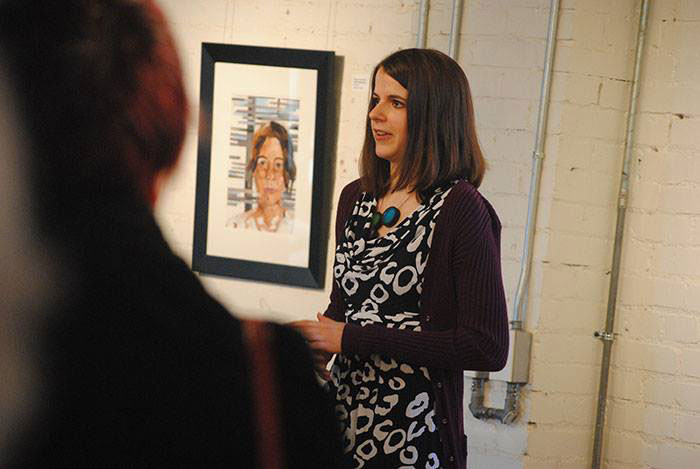
It’s important for artists to know how to talk about their artwork so they can promote it to the public. Giving talks helps others understand your process, technique, and the underlying meaning behind your work. If you have to give an artist talk, but are a little stuck on how to get started, here are some ideas to help you out:
1. Brainstorm
Take some time to brainstorm possible topics to cover. What sets your work apart from other artists? How does your artwork fit in with what’s currently available on the market? What projects are you most proud of? Or what projects or series are you hoping to complete in the future?
2. Write a rough draft of your talk
I generally like to create an outline first of what I want to talk about, and then I expand on the details later. I like to use the following format:
- Brief overview of my background and studies
- How I got started with being an artist
- Who are my influences
- A walkthrough of my process and technique
- More details on the subject matter I cover
- A look at the meaning behind some of my work
- My plans for future projects or series to work on
- Closing remarks
3. Expand on the topics in your rough draft
Think about the narrative you can write for each topic. What stories can you tell? Sharing anecdotes can help make your talk more engaging for listeners.
4. Rehearse your talk
I usually like to over-rehearse my talks, just to know for sure that I know everything I want to say by heart, and so I won’t stumble over my words. I’d recommend practicing in front of a mirror, as well as practicing while staring across the room, so you can have a couple of different ways of experiencing the artist talk delivery process.
5. Brainstorm other topics when talking to individuals after the talk
Think about talking points about your work that you don’t cover in your talk, that you can use when chatting with people in the crowd.
So there you have it – a few ideas to help get you started. And feel free to let me know if you have any questions. I’m always looking to improve on the resources I’m writing.




